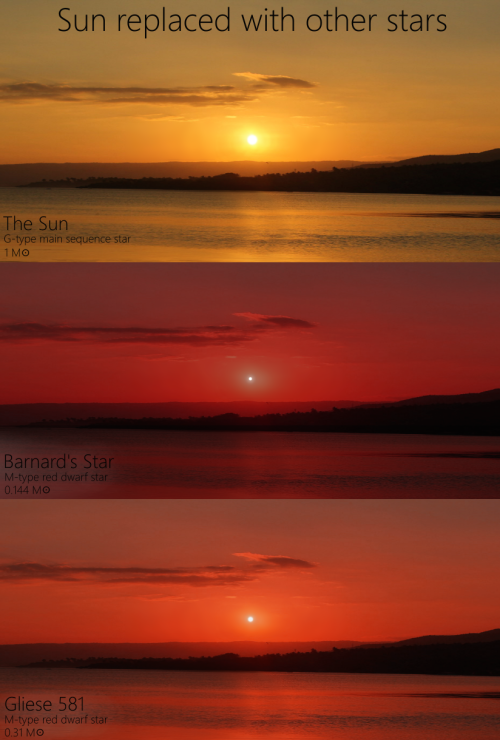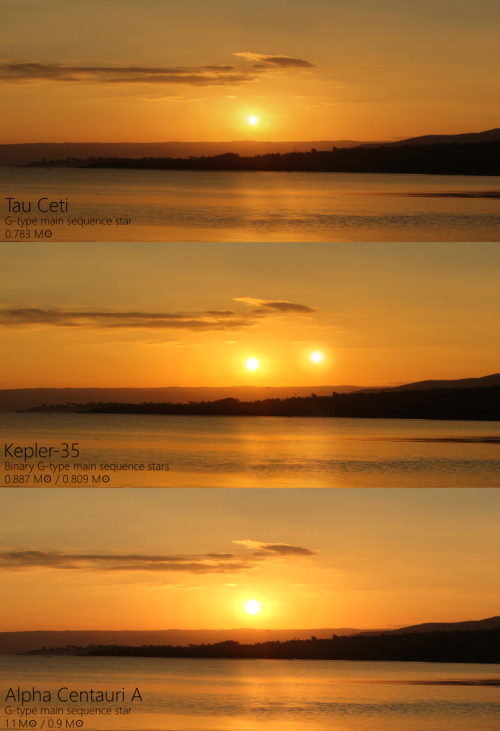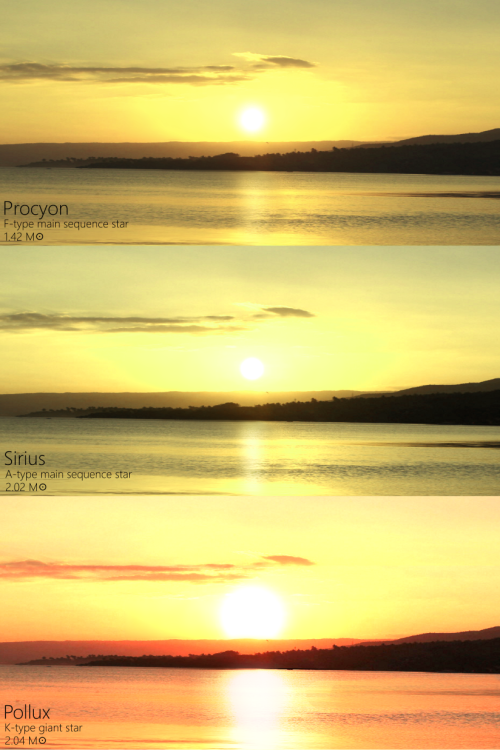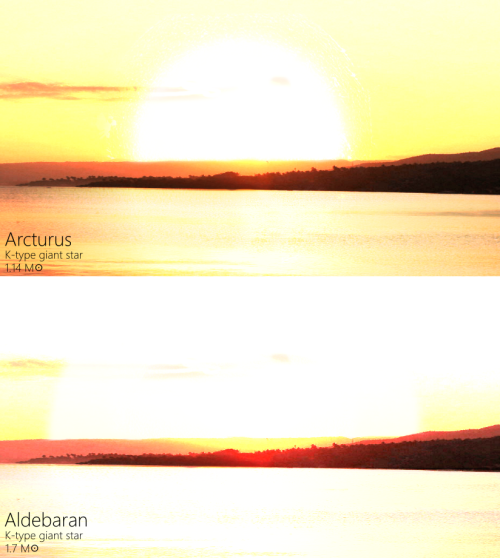(via A Knight's Mission To Mars)

(via A Knight's Mission to Mars)
Hey everyone! I recently had the opportunity to work on and publish an article about student opportunities in the space industry in the University of Central Florida’s student-run publication Imprint. Please feel free to check out my article and see the other awesome work Imprint has!
More Posts from Catchconstellations-blog and Others
First Discovery of Atmosphere on Known Exoplanet
While news of Trappist-1′s potentially inhospitable environment made its way through the news feeds, a new discovery emerged to make up for it: an existing atmosphere on exoplanet GJ1132b.
Located 39 light years away (just around the corner in galactic terms), the exoplanet is similar to Earth in size and mass, and is in close-orbit to its star: a dim red dwarf just slightly cooler and smaller than our own Sun. It was discovered in 2015, but it’s only now that scientists have been able to take a closer look at its composition.
While the distance between GJ and its host star is more similar to the one between Venus and our Sun, therefore most likely rendering the exoplanet incapable of hosting life due to extreme surface temperatures of up to 370 degrees Celsius/700 degrees Fahrenheit, the most important aspect to focus on is the discovery is the atmosphere that exists on GJ.
Using advanced technology that picks out biochemical signatures such as those of oxygen, methane, and hydrogen, scientists have identified a thick atmosphere of either steam or methane surrounding GJ. While this is not a certain indicator of life, it is an crucial step in increasing our knowledge of potentially habitable alien planets out there.
It is definitely interesting to see that scientists have found the first alien atmosphere that isn’t Earth’s. It seems that many of the Earth-like planets scientists have discovered are inclined to orbit red dwarf stars like Earth and that of GJ1132b. I wonder if we specifically target finding red dwarves, will wel increase our chances of finding more and more Earth-like exoplanets that could be capable of having life? It’s something to think about as we continue moving into the future.
Origins is one of my favorite documentaries of all time. Neil deGrasse Tyson does a marvelous job of narrating a story interwoven with strong scientific evidence, great artistic visuals, and immersive story-telling. While Origins is an old documentary (first shown in 2004), many of its content is still applicable today.
One of my favorite aspects of Origins is its ability to explain to the viewer why understanding the start of our universe is important. Often times, the answer to “How did life start?” is filled with complex scientific concepts and theories. Origins breaks down these complicated explanations into points that anyone can digest. I highly recommend it to any space enthusiast out there.
Really interesting to see a space-centric blog that isn't just pretty pictures of stars without any context. Your analyses and explanations of ongoing news aren't bad at all, so keep up the good work.
Thank you so much! I do my best to make sure my entries have good content, so I’m happy to know that you’re enjoying them!

The beautiful Milky Way taken in one of the most darkest skies in the world over Boa Vista in the Cape Verde Islands. photo by James Atkinson
js




The Sun replaced with other Stars
This visualization shows how the sunset could look like to a human observer if our Sun was replaced by some of the other stars in our galaxy with different sizes and magnitudes, namely Barnard’s Star, Gliese 581, Tau Ceti, Kepler-23, Alpha Centauri A, Procyon, Sirius, Pollux, Arcturus and Aldebaran.
It is just a concept, as liquid water and the Earth as we know it could not exist in the vicinity of the most stars in this graphic. Visualizations are based on the absolute brightness, spectral class and the radius of each star.
by Martin Vargic
Exploration is wired into our brains. If we can see the horizon, we want to know what’s beyond.
Buzz Aldrin
Let me start off by saying that I think Crash Course is a great resource for people who want to get the basic details of any subject the creators offer. CC’s series for astronomy is particularly wonderful. The science behind astronomy and space can be mind-boggling due to the complexities of physics, mathematics, photonics, and other relevant subjects; CC makes it easy and fun to learn about astronomy without being too technical or in-depth. Great series of videos if you have time to check them out!
A Quick Q&A
Ever my first post, I’ve had some great comments and questions from people who’ve stopped by my blog, and I’m going to respond to them all in this post to keep things organized!
---
Q1: In reference to the Emirates’ plans to build a Mars city by the end of the century - do you think they can do it? (question by krrizal)
A: I definitely think anything is possible. With the current rate of technological advancements and rise of interest in space exploration globally, I think there is a lot of support for those who want to go space - and more specifically Mars. Really, there has never been a better time for space to take the forefront of global topics. If Emirates stays on track with their plans, I believe they can build a city on Mars.
---
Q2: cute theme! where did you get it from? (question anonymous)
A: Hello! The theme is made by this wonderful person, I just added my own code to it for editing and personalizing purposes.
---
Q3: lol high 5 from UCF! (comment made anonymous)
A: Go Knights! :D
---
Q4: Do you have any experience working in space?
A: I wish! I am doing undergraduate research right now in the field of environmental engineering, since I also want to go into sustainable energy. I’m waiting on internship responses from NASA, so fingers crossed! My dream is to do astrobiology research in space and sustainable urban development down on Earth.
---
Thank you everyone for your questions and comments! Please feel free to stop by my ask box at any time.

Thoughts on the ISS Water Systems
Recently, I was asked by my research mentor to conduct a literature review on the drinking water systems aboard the International Space Station. Let me say this: the technology and the people aboard the ISS really know how to recycle water!
Here are some cool facts I discovered while doing this research:
- Sweat, pee, and tears are all recycled through intensive chemical and physical processes
- There is no way to recycle/reuse solid waste like brine yet, so it is packaged and sent back down to Earth through payloads
- The ISS has a motherboard-like program called the Environmental Control and Life Support System (ECLSS) that basically outlines in detail all the processes that need to be in order to sustain life aboard the spacecraft
- The ISS is currently able to support six living crewmembers aboard, but it is not 100% sustainable because chemical resources (oxygen, water, etc.) are invariably lost over time
Just some things I found interesting. I was glad to do this kind of literature review because it gives me an outlook on how much progress we still need to make in trying to achieve long-term space travel and habitation.
Historic Milestone in Space Flight Technology
Today, March 30, 2017, marks a significant and critical step in making affordable space travel more possible than ever.
Last April, the whole scientific community worldwide was watching as Elon Musk’s SpaceX successfully launched and landed the Falcon 9 rocket booster, proving for the first time in space flight history that it was possible to save and collect rockets after being launched into space. This March, SpaceX aims to up its standards by relaunching and re-landing the same rocket booster, which will deliver a communications satellite into orbit for a Luxembourg-based telecommunications company.
Why is this important? Simply put, rocket boosters are the most expensive part to build for any type of rocket. While SpaceX claims to have the most affordable rocket launches in the world, solidifying the concept of 100% reusable rocket boosters can save space programs $18 million per launch and open more doors for cost-effective commercial space travel.
If 100% reusable rocket boosters become a reality, the cost of launching rockets, experiments, and people into space can be significantly lowered to the point where non-scientific commercial space travel can be a common occurrence.
I can only wonder, then, how much and how far this development will impact not only the space industry, but the whole world itself. If this pushes through, there can be few excuses, then, for not recognizing the potential in looking beyond our own orbit and planet. With incredible scientific progress and discoveries happening almost every day, I think it’s only a matter of time before everyone sets their sights on the stars and starts pushing for interstellar travel.
We are no longer limited to our own solar system, and the possibilities that come with recognizing and answering to that are as unfathomable as space itself.
-
 clonesofclones liked this · 8 years ago
clonesofclones liked this · 8 years ago -
 catchconstellations-blog reblogged this · 8 years ago
catchconstellations-blog reblogged this · 8 years ago
CONSTELLATION: (noun) Group of stars that form a recognizable pattern to which a mythological or earth-based name is assigned Pattern of stars whose name or is associated with different stories and meanings Story told by stars connected across the infinite night sky, overlapping with countless other stories that have unfolded from ancient supernovas, whose imaginary lines urge our eyes up from the chaos of the world around us to the unknown vastness in which we are but a speck of dust -------- Hi! I’m a starry-eyed astrogeek named Dianne who loves absolutely everything that has to do with the stars and outer space. When I’m not studying or preparing to take over NASA one day, you can find me trying to stargaze despite city lights or happily planning my next road trip.
35 posts